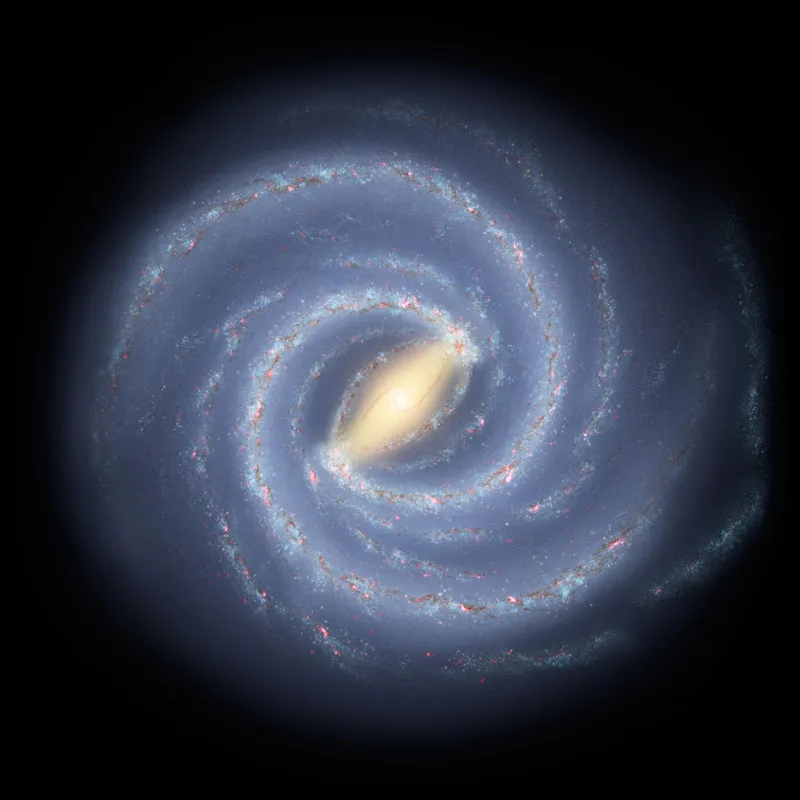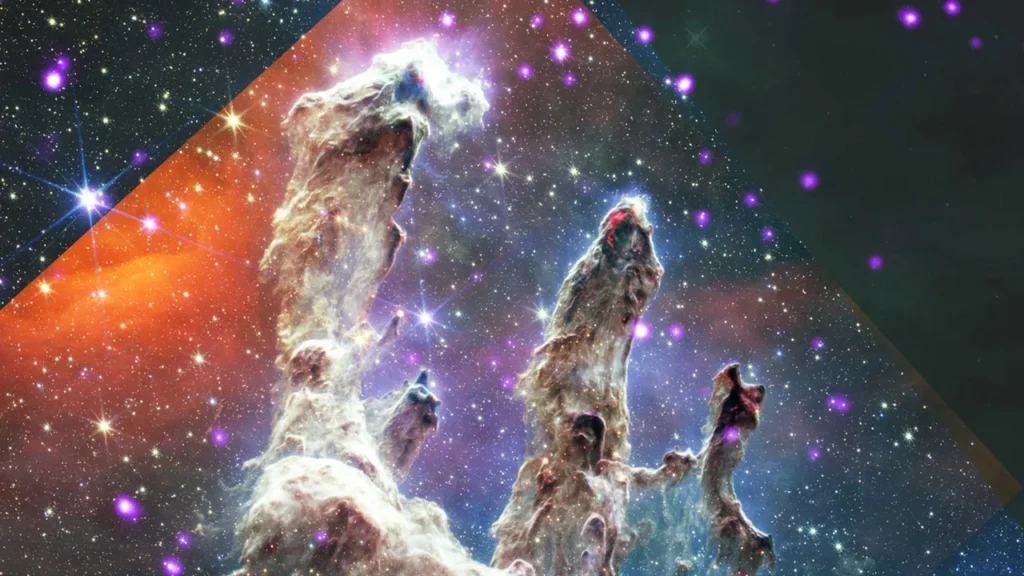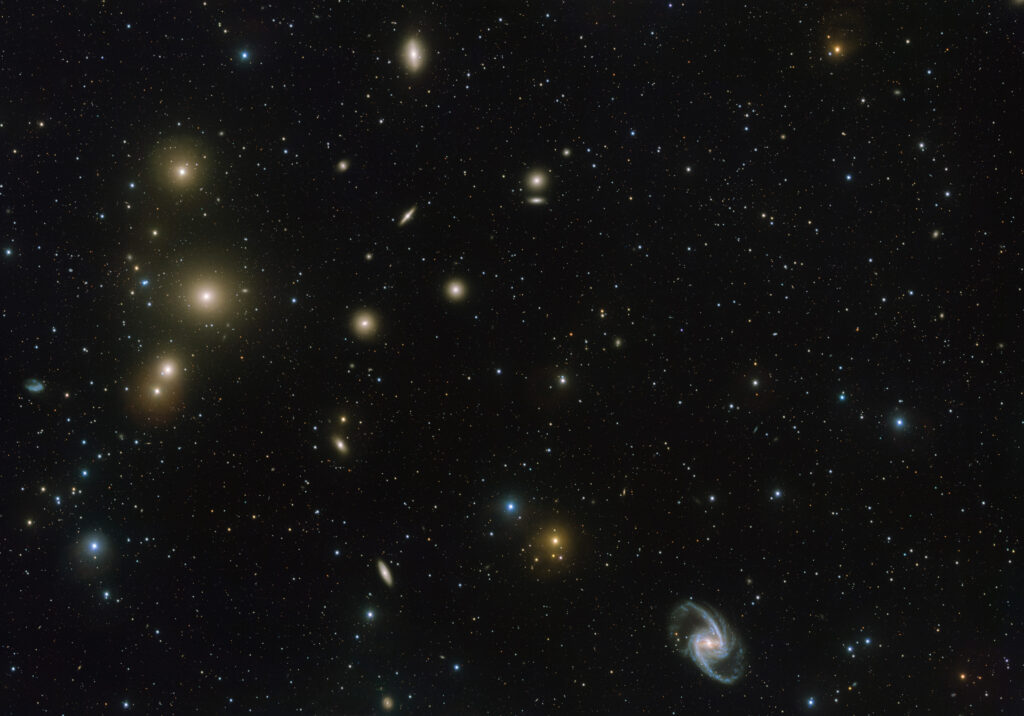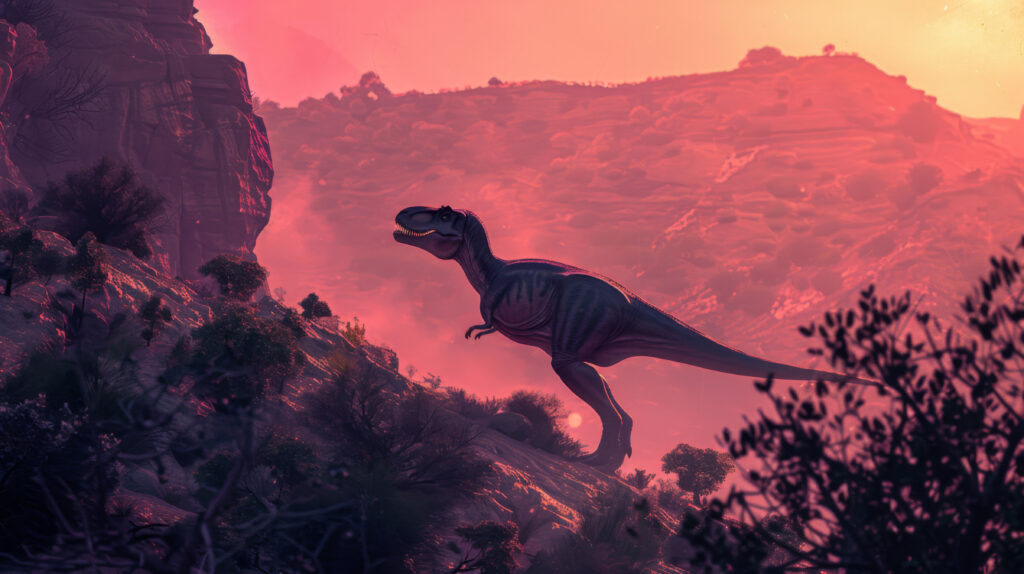A Calendar Beyond Time
© freepik
The Cosmic Calendar serves as a tool to illustrate the universe’s timeline by compressing its known age of 13.8 billion years into a single year. This method aids in conveying complex astronomical concepts in a more relatable manner for educational and popular science purposes.
According to this visualization, the Big Bang is equated to the start of January 1 at midnight, while the present moment corresponds to the end of December 31 just before midnight. Within this scale, each cosmic second represents 437.5 years, a cosmic hour equals 1.575 million years, and a cosmic day encompasses 37.8 million years.
Carl Sagan introduced and popularized this concept in his 1977 book “The Dragons of Eden” and his 1980 television series “Cosmos.” Sagan elaborated on the analogy by comparing the surface area, illustrating that if the Cosmic Calendar were expanded to the size of a football field, the entirety of human history would occupy a space equivalent to the size of his hand.
JANUARY-FEBRUARY

BIG BANG THEORY
The Cosmic Calendar symbolizes the universe’s timeline, starting with the Big Bang on January 1, marking the universe’s birth. Approximately 13.8 billion years ago, the universe began from a hot, dense singularity, expanding rapidly to form basic particles and atoms, and evolving into the structures we see today. Cosmic inflation initiated an exponential expansion, followed by a slower continuous growth, leading to the formation of stars, and galaxies, and transparency to light.
Support for the Big Bang theory includes observed universal expansion, cosmic microwave background radiation, gravitational waves, and the abundance of light elements like hydrogen and helium. The cosmic microwave background radiation, a relic of the Big Bang, pervades the universe uniformly in the microwave spectrum, offering insights into the early universe. Gravitational waves, predicted by Einstein, are spacetime disturbances from events like black hole collisions, enhancing our understanding of cosmic evolution.
These discoveries extend our knowledge beyond visible light. The CMB, the oldest light, dates back to 380,000 years post-Big Bang, while gravitational waves allow the study of events preceding the CMB, like the rapid inflation after the Big Bang.
FIRST STARS FORMED
On 13th January, 453 million years later, the first stars were born in the universe which are thought to have been massive and hot, with surface temperatures around 100,000 Kelvin and luminosities of millions of times that of the Sun. These stars, known as Population III stars, are believed to have formed from the primordial gas of hydrogen and helium, with no heavier elements present. They are thought to have burned out quickly, exploding as supernovae or collapsing into black holes, leaving behind only the heavier elements forged in their cores. The exact details of these early stars are still a subject of ongoing research and debate among astronomers.
GAMMA RAY BURST
The oldest known gamma-ray burst, GRB 090423, occurred on January 14 in the cosmic calendar, 491 million years from the Big Bang, but its radiation didn’t reach Earth until April 23, 2009. This event, named GRB 090423, was the most distant astronomical object discovered, originating from a star explosion with several times the mass of our Sun. The energy released during this explosion was equivalent to the Sun’s total energy production over its 10-billion-year lifetime, all within less than ten seconds.
After traveling for 13 billion years, the radiation finally reached Earth, appearing in the Leo constellation. The Swift Gamma-Ray Burst Mission identified it on April 23, 2009, at 07:55:19 UTC, with its afterglow being observed in the infrared spectrum. Gamma-ray bursts are exceptionally luminous flashes of gamma rays that occur as a result of cosmic explosions, often associated with the formation of black holes. These bursts typically last only a few seconds but are often followed by an afterglow that can be observed at longer wavelengths for many hours or even days after the initial event.
FIRST GALAXIES FORMED
Approximately on January 16 (567 million years later), the first galaxies in the universe began to form. These early galaxies emerged during a time known as the Dark Ages when the universe was almost entirely dark and filled with a mix of dark matter, hydrogen, and helium. The first stars, much more massive than those seen today, lived short lives before exploding and releasing heavy elements.
Over the next billion years, gravity led to the assembly of these early clouds of gas into the first galaxies. These galaxies, including the most ancient ones like C1-23152, ceased star formation abruptly after a period of intense activity, possibly due to running out of fuel. The formation of these ancient galaxies challenges current simulations and theories, indicating that there are still missing pieces in our understanding of their origins and evolution.
OLDEST KNOWN QUASAR
On 21st January the oldest known quasar was formed, which was discovered at a distance of about 13 billion light-years. This quasar, with a redshift of 7.5, is part of a supermassive black hole that has 800 million times the mass of our Sun. It is crucial in shedding light on the early universe and the formation of celestial objects.
VISIBLE UNIVERSE EXTENDS
In February of the Cosmic Calendar, the visible universe experiences a significant expansion as galaxies continue to form and gravitationally cluster together. During this period, the cosmic landscape undergoes a transformative phase characterized by the emergence of vast galactic structures. Within these clusters, galaxies, each comprising billions of stars, begin to coalesce, igniting the darkness of space with their radiant light. Filaments of dark matter, invisible yet exerting gravitational influence, thread through the expanding cosmos, sculpting the intricate cosmic web. This expansion heralds a crucial juncture in cosmic evolution, as the universe transitions from a primordial soup of matter and energy to a tapestry of galaxies, rich in diversity and complexity.
MARCH-MAY

FORMATION OF MILKY WAY GALAXY
The formation of the Milky Way galaxy began on March 15, during the Cosmic Dawn, 2.7 billion years from the Big Bang. It originated from the collapse of a large gas cloud due to gravity, leading to the formation of smaller clouds that eventually merged. This process, known as the monolithic collapse hypothesis, resulted in the creation of the Milky Way’s halo and nucleus. The halo consists of old stars with low metal content, while the nucleus contains a mix of stars with varying properties.
The Milky Way’s formation involved the accumulation of mass through clustering and merging, shaping its structure over time. The galaxy’s growth was influenced by interactions with smaller galaxies and globular clusters, contributing to the diversity of structures observed today. The formation of the Milky Way represents a complex interplay of gravitational forces, gas dynamics, and stellar evolution.
PEAK STAR FORMATION IN THE MILKY WAY
The peak of star formation in the Milky Way occurred early in the universe’s history, around 2.8 billion years after the Big Bang (March 18). During this period, the first star clusters merged, initiating waves of stellar birth and the formation of early galaxies. By 400-500 million years, the largest galaxies had already grown substantially, with major mergers becoming common. This led to a denser cosmic web and a continuous increase in the star-formation rate for the first 3 billion years.
However, after about 3 billion years, the star-formation rate plateaued and then gradually declined, remaining at around 80% of its maximum value until the universe was 5-6 billion years old. This decline was influenced by various factors, resulting in a significant drop in the star-formation rate over time, with most stars forming within the first few billion years of the universe’s existence.
FORMATION OF MILKY WAY GALAXY DISK
As the Milky Way galaxy evolved, it grew through galaxy mergers and direct gas accretion. The Milky Way’s disk formed on 13th May as the gaseous interstellar medium collapsed from a spheroidal shape to a disk due to conservation of angular momentum. This process allowed for the formation of subsequent generations of stars, primarily observed in the disk. The galaxy’s structure includes a central bulge, a central bar, spiral arms, and a massive halo, with the disk extending radially outward and containing the majority of the galaxy’s stars. The ongoing evolution of the Milky Way involves continuous star formation, interactions, and mergers, shaping its current structure and dynamics.
JUNE-JULY

PEAK STAR FORMATION IN THE VISIBLE UNIVERSE
The peak of star formation in the visible universe happened approximately 8 billion years ago, during the “cosmic noon” phase when the universe was relatively young. This period, likely around June 6th, saw a significantly higher rate of star formation compared to the present day. Studies suggest that the most massive galaxies were the most active in forming stars during this era, with rates up to 100 times greater than in our Milky Way now. This intense star formation was fueled by ample cold gas and frequent galaxy mergers.
Over time, star formation rates have decreased as galaxies depleted their gas reserves and feedback mechanisms regulated the process. The earliest stars, Population III stars, may have formed about 200 million years post-Big Bang. The universe’s expansion, initiated by the Big Bang, continues to shape the cosmos we observe today.
DARK ENERGY BEGINS TO DOMINATE GRAVITATION
Dark energy, an enigmatic force, has come to dominate the universe’s expansion since around July 5th. This shift from a matter-dominated era marks a significant change in the cosmos. Previously, the universe’s expansion was slowing due to gravity, but dark energy’s repulsive force has now caused an accelerating expansion. The exact nature of dark energy remains a mystery, though it is believed to be either a cosmological constant or a dynamic scalar field called quintessence. Observations of supernovae and cosmic microwave background radiation have confirmed dark energy’s dominance, accounting for approximately 68.3% of the universe’s total mass energy. Unraveling the origins and behavior of this enigmatic force is crucial for understanding the universe’s evolution and ultimate fate.
AUGUST-SEPTEMBER

GALAXY CLUSTER FORMATION PEAKS
Galaxy cluster formation is a complex process driven by the gravitational collapse of large-scale structures in the universe. This occurred on 1st August, during the epoch of galaxy cluster formation. The rapid growth of dark matter halos and the collapse of gas within them led to the formation of galaxies, which then merged into larger clusters. This hierarchical process continued over billions of years, with smaller groups and clusters merging to form superclusters. The distribution of dark matter and gas in the universe influenced the rate and efficiency of galaxy formation, shaping the overall structure of the clusters.
THE SUN WAS BORN
The Sun is believed to have formed on August 31st from a large cloud of gas and dust known as the solar nebula. This cloud was primarily composed of hydrogen and helium, with trace amounts of other elements. A nearby supernova explosion is thought to have provided the shock wave that initiated the collapse of the solar nebula.
As the nebula collapsed under its gravity, it began to rotate, causing the material to flatten into a disk around the center. Most of the mass in the center of this disk formed the Sun, while the remaining material coalesced to form the planets and other objects in the Solar System.
The intense gravitational forces and pressure in the center of the collapsing nebula caused the temperature to rise, eventually reaching the point where nuclear fusion began in the core of the newly formed Sun. This process of nuclear fusion, which converts hydrogen into helium, is what powers the Sun and provides the energy that sustains life on Earth. The Sun is now about halfway through its main-sequence stage and will continue to fuse hydrogen for several billion more years before undergoing a series of changes, eventually becoming a red giant and then a white dwarf star.
FORMATION OF SOLAR SYSTEM
The solar system formed around the 2nd of September from the gravitational collapse of a large molecular cloud of gas and dust As this cloud collapsed, it began to spin and flatten into a protoplanetary disk, with the majority of the material accumulating at the center to form the Sun.
Within the disk, dust and gas gravitationally attracted each other, coalescing to form larger and larger bodies. The inner regions of the disk, closer to the Sun, were hotter, allowing only the condensation of metals and silicate minerals with high melting points. This led to the formation of the four terrestrial planets – Mercury, Venus, Earth, and Mars – which have solid rocky surfaces.
Farther from the Sun, temperatures were lower, allowing the condensation of lighter gaseous molecules like hydrogen, helium, methane, and water ice. This enabled the formation of the four giant planets – Jupiter, Saturn, Uranus, and Neptune – which are primarily composed of gas and ice.
The Earth formed from the accretion of material in the inner solar system around 4.54 billion years ago. The Earth’s moon is thought to have formed shortly after, when a Mars-sized object collided with the early Earth, ejecting material that coalesced to form the moon.
ORIGIN OF LIFE
The origin of life on Earth is believed to have involved the gradual formation of organic compounds from inorganic precursors, a process known as chemical evolution or abiogenesis, which happened on the 25th of September of the Cosmic Calendar.
According to the Oparin-Haldane hypothesis, the early Earth’s atmosphere was reducing in nature, lacking oxygen but containing methane, ammonia, and other simple inorganic compounds. Under the influence of energy sources like lightning, ultraviolet radiation, or volcanic activity, these compounds combine to form more complex organic molecules like amino acids, nucleic acids, and sugars – the building blocks of life. These organic compounds are then assembled into larger polymers like proteins and RNA, which could have undergone self-replication and self-organization. This “primordial soup” of organic compounds eventually gave rise to the first primitive, self-replicating life forms, possibly based on RNA rather than DNA.
The transition from these simple, non-living organic molecules to the first living cells with the capacity for Darwinian evolution remains an active area of research, with several competing hypotheses about the specific geochemical conditions and processes involved.
OCTOBER-NOVEMBER

PHOTOSYNTHESIS BEGINS
Photosynthesis, the process where plants convert sunlight into energy, began on October 2nd in an oxygen-devoid atmosphere, marking a significant shift in Earth’s history. Initially performed by cyanobacteria, these simple organisms utilized sunlight, water, and carbon dioxide to produce energy, releasing oxygen as a byproduct. This oxygen was absorbed by iron-rich rocks, causing them to rust and form iron oxide deposits. As oxygen production increased over millions of years, it accumulated in the atmosphere, leading to the Great Oxidation Event around 2.5 billion years ago. This event transformed Earth’s environment, enabling the evolution of complex life forms dependent on oxygen for metabolism and fostering the development of the ozone layer, shielding life from harmful UV radiation.
Despite fluctuations influenced by volcanic activity and climate changes, oxygen levels stabilized around 300 million years ago at approximately 21% of the atmosphere. This stable oxygen level has been crucial for the diverse life forms we see today, playing a vital role in sustaining life on Earth.
OLDEST KNOWN FOSSILS
The oldest known fossils date back to approximately 3.2 billion years ago, believed to be the world’s oldest by scientists from University College London. Encased in quartz layers, these microfossils are made of iron oxide and are likely remnants of bacteria that lived on iron in an iron-rich deep-sea hydrothermal vent system. The structures, including filaments and tubes, are mineralogically identical to those in younger rocks from various regions. Despite some skepticism due to the structures’ orientation and size, these fossils provide valuable insights into early life on Earth and have significant implications for the study of ancient microbial life.
EUKARYOTES
Eukaryotic life likely evolved around 2 billion years ago (November 9) through endosymbiosis, where large cells engulfed smaller prokaryotic cells. This formed a symbiotic relationship, with the engulfed cells becoming the mitochondria and chloroplasts of eukaryotic cells. This provided eukaryotes with more efficient energy production, allowing them to diversify.
Around 1.6 billion years ago, some eukaryotes gained the ability to photosynthesize through endosymbiosis with cyanobacteria, giving rise to various algae. Multicellular eukaryotic organisms also began to appear around 1.7 billion years ago.
The evolution of reproduction in eukaryotes, though still a puzzle, is thought to have occurred in a single-celled eukaryotic ancestor. This allowed for greater genetic diversity and adaptation, contributing to the spectacular diversity of animals, plants, and fungi we see today.
DECEMBER

FIRST MULTI-CELLULAR LIFE FORMS
The earliest known multicellular organisms emerged around 1.2 billion years ago. Fossils resembling primitive seaweed suggest that some eukaryotes had evolved into large, multicellular organisms by this time. The timing of the origin of multicellularity is uncertain, and it may have occurred multiple times. One possibility is that single-celled organisms went through a stage similar to that of modern choanoflagellates, which sometimes form colonies consisting of many individuals.
Around 1 billion years ago, some simple multicellular organisms appeared to have distinct cell types, which was an important step toward the development of internal organs. The first recognizable animals, such as sponges, may have evolved as early as 890 million years ago.
PALEOZOIC ERA
The Paleozoic Era (December 17) was the first of three major geological eras, spanning from 538.8 million years ago to 251.9 million years ago. It was a time of dramatic geological, climatic, and evolutionary change on Earth.
The Paleozoic Era began with the Cambrian Period, marked by the Cambrian explosion – a rapid diversification of marine life, including the evolution of many modern animal phyla. This was followed by the Ordovician, Silurian, Devonian, Carboniferous, and Permian Periods.
During the Paleozoic, the continents were assembled and rearranged, forming the supercontinent Pangaea by the late Paleozoic. The climate fluctuated, with periods of glaciation and global warming. Life transitioned from the oceans to the land, with the evolution of the first plants, arthropods, and tetrapods (four-limbed vertebrates). The Paleozoic Era ended with the Permian Extinction, the largest mass extinction event in Earth’s history, where over 90% of species went extinct. This paved the way for the rise of the dinosaurs and other dominant lifeforms of the subsequent Mesozoic Era.
MESOZOIC ERA
The Mesozoic Era (December 25), spanning from about 252 to 66 million years ago, was a pivotal time in Earth’s history following the Paleozoic Era. It is divided into three periods: the Triassic, Jurassic, and Cretaceous. The Mesozoic was characterized by the breakup of the supercontinent Pangaea, leading to the formation of Laurasia and Gondwana. Dinosaurs emerged in the Mid-Triassic and dominated the terrestrial environment for millions of years until their extinction at the end of the Cretaceous. Archaic birds and true toothless birds evolved during this era, along with the first mammals.
Plant life diversified significantly, with the appearance of flowering plants in the Early Cretaceous. The Mesozoic climate was predominantly warm, and the era witnessed significant tectonic activity, including the rifting of Pangaea. Cataclysmic events like the end-Triassic and end-Cretaceous mass extinctions marked major transitions in Earth’s biodiversity. The Mesozoic Era was a time of remarkable geological, climatic, and evolutionary changes that shaped the world we know today.
CENOZOIC ERA
The Cenozoic Era (December 29), spanning from 66 million years ago to the present, is the most recent and shortest of the three major geological eras on Earth. It is divided into three periods: the Paleogene, Neogene, and Quaternary.
The Cenozoic began with the Cretaceous-Paleogene extinction event, which wiped out the non-avian dinosaurs and paved the way for the rise of mammals. Throughout the Cenozoic, the Earth’s flora and fauna evolved towards their modern forms, with the dominance of mammals, birds, and angiosperms (flowering plants). During the Paleogene Period (66-23 million years ago), the continents moved into their current positions and the climate was generally warmer, allowing the diversification of mammals, birds, and flowering plants.
The Neogene Period (23-2.6 million years ago) saw continued cooling and drying, leading to the expansion of grasslands and the evolution of large grazing mammals like horses, cattle, and elephants. The Quaternary Period (2.6 million years ago to the present) was marked by cycles of glaciation and the emergence of hominins, including modern humans.
31st DECEMBER
On the cosmic calendar, December 31st is the most significant day, as it encompasses the majority of human history and progress.
In the final seconds of the cosmic year, the Earth’s last glacial period ends just 26 seconds before midnight. This is followed by the widespread adoption of farming and agriculture 22 seconds before midnight. The first walled cities with populations over 1,000 people emerge 20 seconds before midnight, and pottery, winemaking, the plow, the wheel, writing, and metalworking all appear in rapid succession in the final 18 seconds.
With just 14 seconds left in the cosmic year, the Bronze Age arrives. This is followed by the rise of the first civilizations, the birth of major religions, and the flourishing of art, philosophy, and science in the final 10 seconds. The last minute of the cosmic calendar is especially eventful, with the domestication of animals, the Neolithic Revolution, the development of writing, the Hellenic period, the birth of Christ, the Dark Ages, the Renaissance, the Age of Discovery, the Industrial Revolution, and finally, the space age and computer revolution all occurring in the final 60 seconds.
Remarkably, all of recorded human history, from the earliest civilizations to the modern era, takes place in the final 10 seconds of the cosmic calendar. This puts into perspective just how brief and recent our existence has been on the cosmic timescale. The first modern humans, Homo sapiens, only appear in the final 7 seconds, with the entire span of human civilization fitting into the last fraction of a second.
This cosmic perspective serves to highlight how rapidly our species has advanced, with the majority of human progress occurring in an infinitesimal fraction of the universe’s history. It also underscores the fragility and brevity of our existence, reminding us that we are but a fleeting presence in the grand scheme of cosmic time. As we continue to shape the future of our planet and species, this cosmic calendar can inspire us to take a longer-term view and work towards a more sustainable and enduring civilization.
